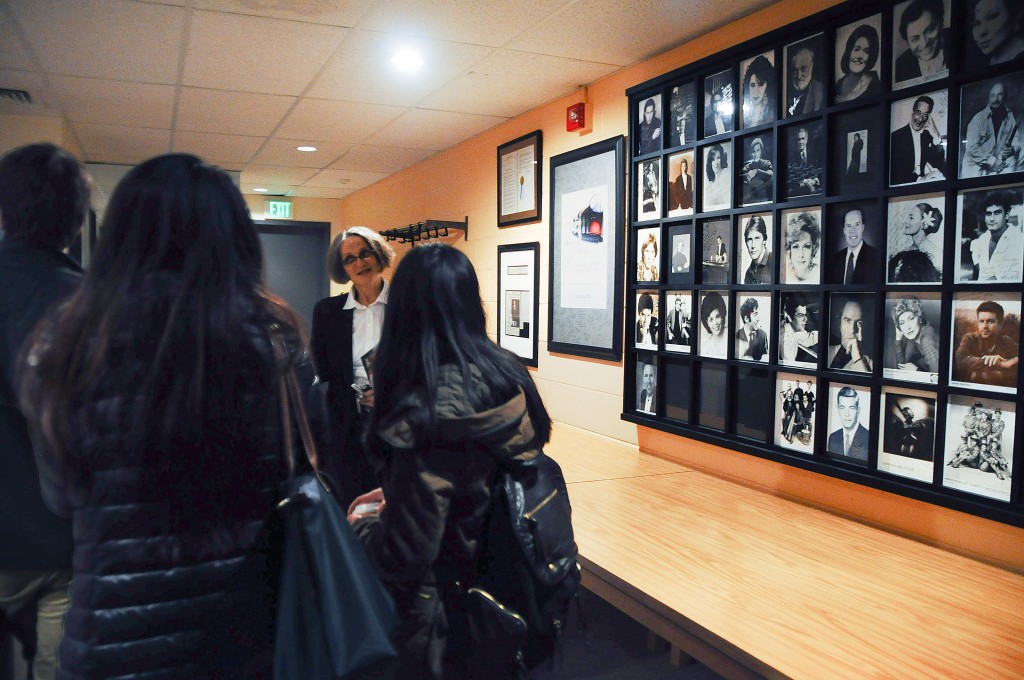
On a campus with mundane building names like “Lecture Hall” and “Science [1-5],” the Anderson Center for Performing Arts is one of the few structures of campus with a proper noun in its name. Flaunting three magnificent theaters, the building is Binghamton University’s premiere location to get lost in. And getting lost is not hard when each theater is ambitiously constructed with top-notch acoustic technology, lights and eye-grabbing designs meant to arrest the audience’s attention and ensnare them in the world of the performance. This Friday, Harpur Edge offered 15 students a behind-the-scenes tour, and Release is here to give you the scoop.
Constructed by the Hutchins, Evans, and Lefferts architectural firm in 1985, the Anderson Center’s three theaters are distinctly designed to accommodate performances of various types. The Chamber Hall and Watters Theatre are on the smaller scale, accommodating 408 and 558 guests respectively, and have stages that drop down to hold a pit of 40 or so musicians. The Chamber Hall’s walls wear reversible acoustic sound boards like armor; flipped to the hard side and they reverberate the low frequencies of a lecture or a play, when flipped to the softer side they provide cushion for acoustically louder performances. The building itself is named after Floyd E. Anderson, a prominent Binghamton and New York state politician in the early and mid-1900s.
When larger-than-life performances come to town, a larger-than-life theater is needed. Boasting 1,170 seats, an 80-man pit and a retractable wall that reveals an additional 1,500 outdoor seats, The Osterhout Concert Theater undoubtedly fits the bill. Sound seamlessly flows from wall to wall of this venue, due to the use of acoustic clouds that hang from the ceiling and reduce reverberations. The National Acrobats of the People’s Republic of China exhibited courage on the Osterhout stage this past Monday, and the Binghamton University Symphony Orchestra will fill the theater with Dvorak’s Ninth Symphony and more on Dec. 6.
Most may argue the best seats in the house are located in the first two rows of the theater, however Casey Korchynsky, the Anderson Center’s house operations director, says otherwise.
“In all of these theaters, the sound is projected towards the back of the room,” Korchynsky said during the tour. “The best seats in the house are about halfway back or a little further.”
On the tour, Korchynsky displayed the Anderson Center’s dressing rooms, costume shop, set shop and green room. Interestingly enough, the green room, a backstage lounge for performers, is not green at all but instead features a photo collage of the stars that Gary Pedro, the Anderson Center’s executive director, has worked with. The room’s moniker is thought to derive from these rooms being painted green historically as a tranquil space for performers to relax in.
Most of the theater’s magic is made off stage, evident in the glamorous assortment of hued fabrics covering the costume shop. Similarly, the set shop bustled with energy as workers prepared vivid backdrops and familiar set pieces for shows like “Little Shop of Horrors” and “Les Miserables.”
“Right before a show, both the set shop and costume shop will be overflowing with workers preparing to bring perfection to the performance,” Korchynsky said.
To make the performances as breathtaking as they are, the Anderson Center relies on ARTSCORPS, its team of volunteers who work for access to free shows, with optional credit for classes. Whether selling tickets in the box office, ushering as an usher in the theater or working behind the scenes in either of the shops, ARTSCORPS volunteers help to provide a comfortable and enjoyable atmosphere for the Anderson Center’s guests.
“The ARTSCORPS is the first act to every show here,” Korchynsky said. “If the guests are not pleased, the show cannot go on.”


